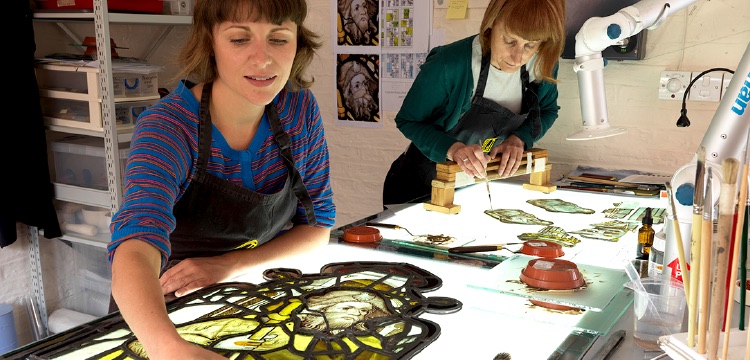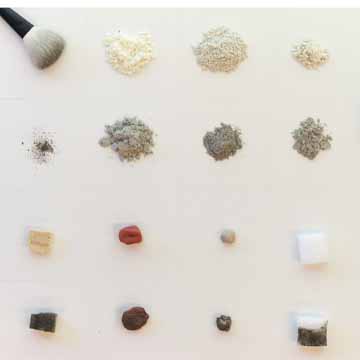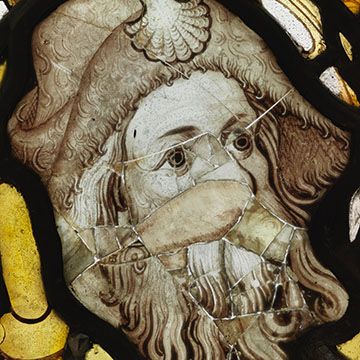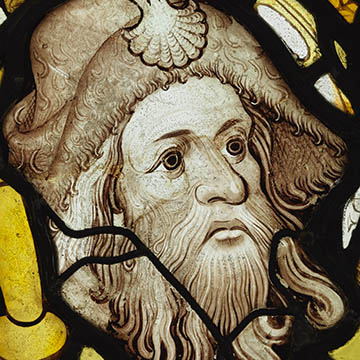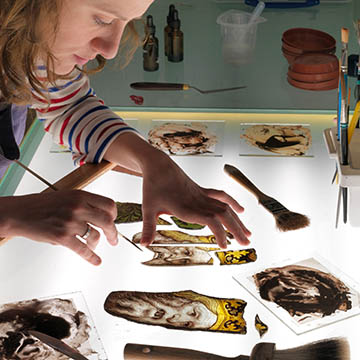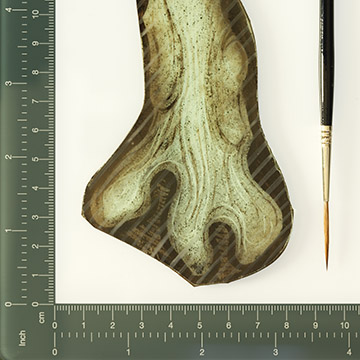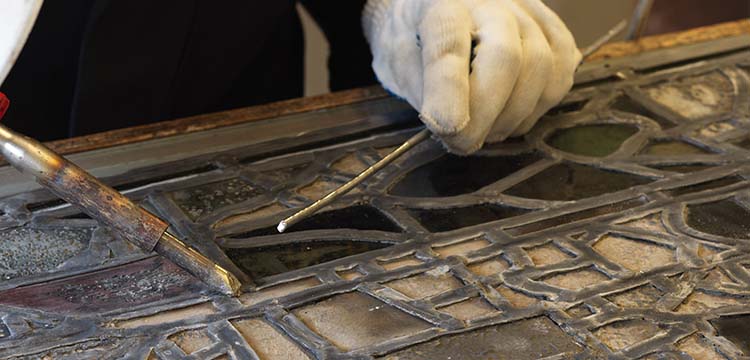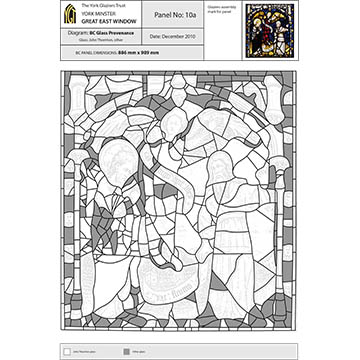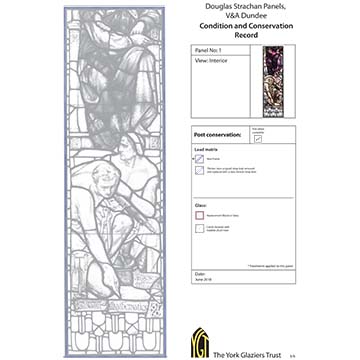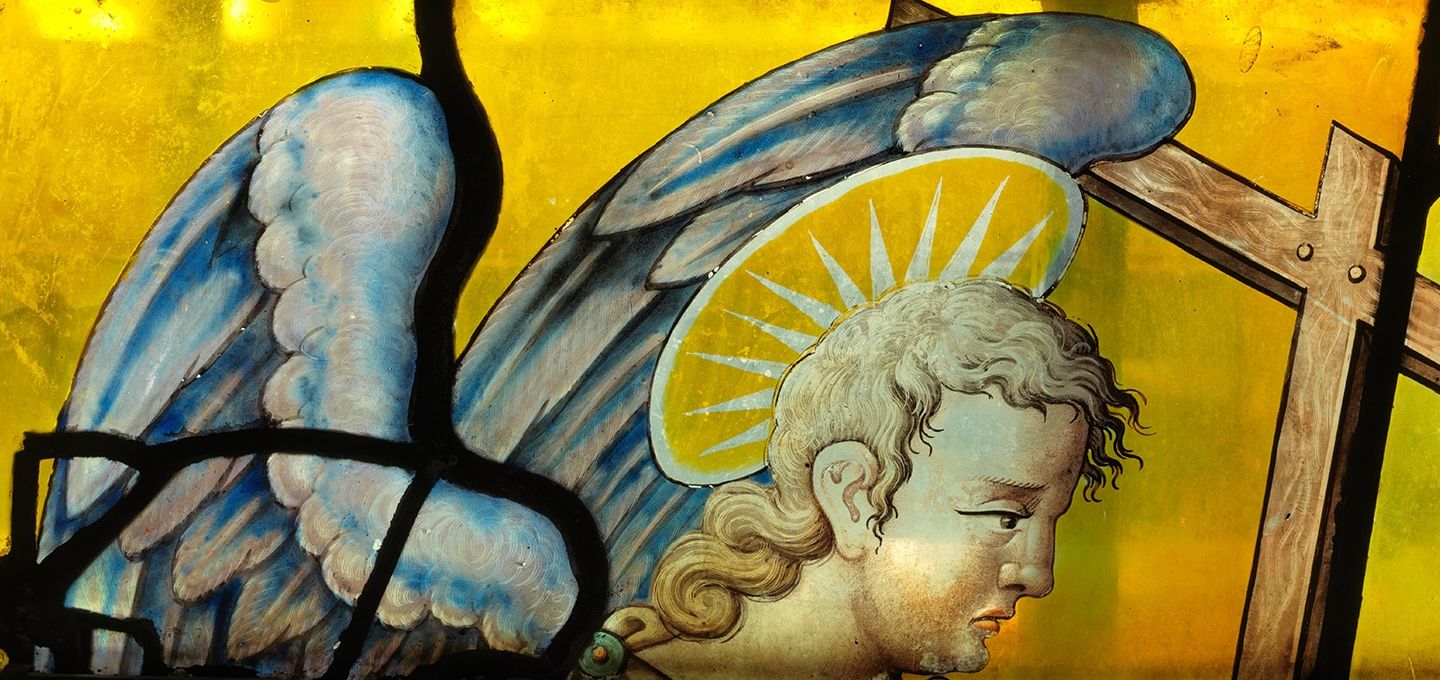
Conservation
Over 50 Years of Excellence in Stained Glass Craft and Conservation
The YGT is committed to the preservation and protection of historic stained glass and glazing of all periods, and subscribes to the Guidelines for the Conservation of Stained Glass published by the International Corpus Vitrearum.
The team can assist in addressing the consequences of the deterioration and corrosion of glass, which can manifest in the pitting of glass surfaces, reduction in glass thickness, loss of surface decoration (paint, yellow stain, coloured enamels), and the accumulation of dirt and corrosion products, as well as the failure of the lead matrix and support structure of the window. YGT takes a multi-faceted approach to conservation, and will tailor the treatment programme to the specific needs of each window, panel, or project. To avoid accidental damage, any work to stained glass windows should always be carried out by stained glass professionals. The YGT employs three Institute of Conservation (ICON) accredited conservators (ACRs), and all of its conservators have a qualification in conservation as well as many years of experience.
Site and In situ work
Timely and expert maintenance can extend the lifespan of a window and can delay the need for more extensive and expensive interventions. YGT can offer in situ maintenance, repair, cleaning and conservation of stained glass, if after a thorough inspection it is deemed appropriate. As experts in situ cleaning services, we can improve the appearance of windows as well as removing the damaging build-up of dirt, microbial growths or other deposits. We can also repair or replace damaged glass, lead and window support systems (such as bars, ties and frames) in situ to increase the window’s longevity.
Studio Work
It may be necessary to remove windows or stained glass panels from their architectural setting so that the most appropriate conservation treatments can be carried out safely and effectively. In these cases the glass is securely stored and worked on in our fully equipped conservation studios. Our team of highly trained conservators are then able to implement a wide range of treatments at the workbench.
Cleaning
Modern cleaning techniques not only remove damaging corrosion deposits, but can also improve legibility, brightness, and translucency of a window. The YGT employs safe, current, non-invasive cleaning practices and all glass is treated with extreme care. Binocular microscopes are used before and during cleaning to monitor the surface of the glass. Innovative and safe solutions to particular problems have included a pioneering technique developed by Rachel Thomas ACR, using chemical vapour (under strictly controlled conditions) for the removal of hard glazing cement with no risk of damage to the glass. For details, see article in ICON News, the newsletter of the internationally recognised Institute of Conservation.
Edge-bonding
Where appropriate, the conservator can apply modern adhesives that allow the impact of insensitive mending leads to be reduced, if not eliminated. Our team keeps up-to-date with advances in conservation techniques, and can adapt their edge-bonding methodology as required. We use a range of conservation-grade epoxy resins and silicones to create almost invisible bonds in broken pieces, improving the visual and structural strength of damaged areas.
Glass painting
Where necessary, our skilled glass-painters can provide conservation infills to replace lost glass. Our team of artists are highly skilled in replicating painted details and creating infill pieces that fit harmoniously and inconspicuously alongside the original stained glass. YGT records, signs and dates newly painted pieces so they are fully documented and identifiable.
Lead consolidation
Windows can be endangered by a weakening and failure in the structure of the lead net or by a failure in the window's support structure. A failure of the waterproofing of the window causes it to leak, damaging glass surfaces and surrounding stonework. The lead net is part of the historic fabric of the window and we endeavor to repair or consolidate it wherever possible. Any re-leading of a window should be undertaken only after careful evaluation.
Documentation
Documentation is an essential and integral part of the conservation process and the YGT compiles documentation of all works to windows or panels as standard, recording the ‘as found’ condition as well as any treatments carried out during the conservation process. This documentation may be in the form of photographs, reports or diagrams, in digital or hard copy.
Get In Touch
If you would like more information on our conservation services please get in touch.
Contact UsContact Us
The York Glaziers Trust, 6 Deangate, York, YO1 7JB

